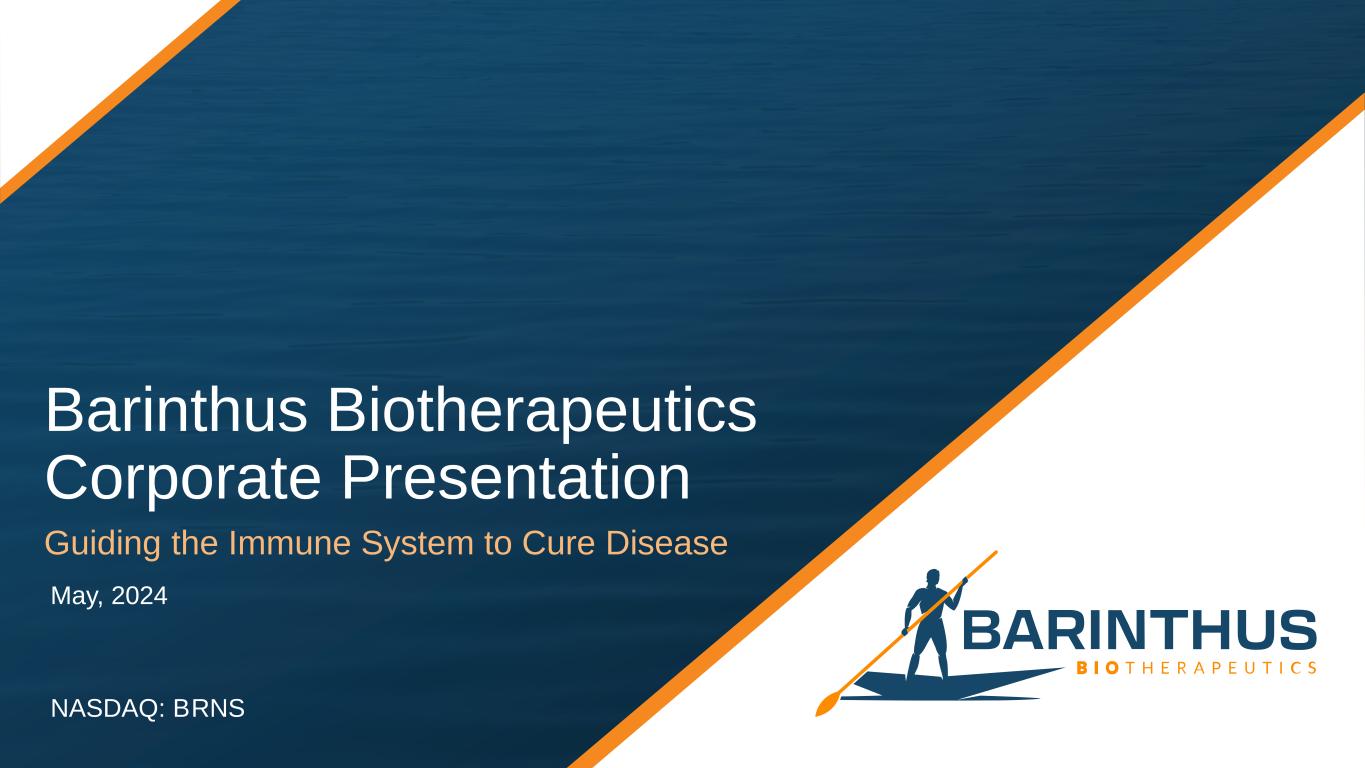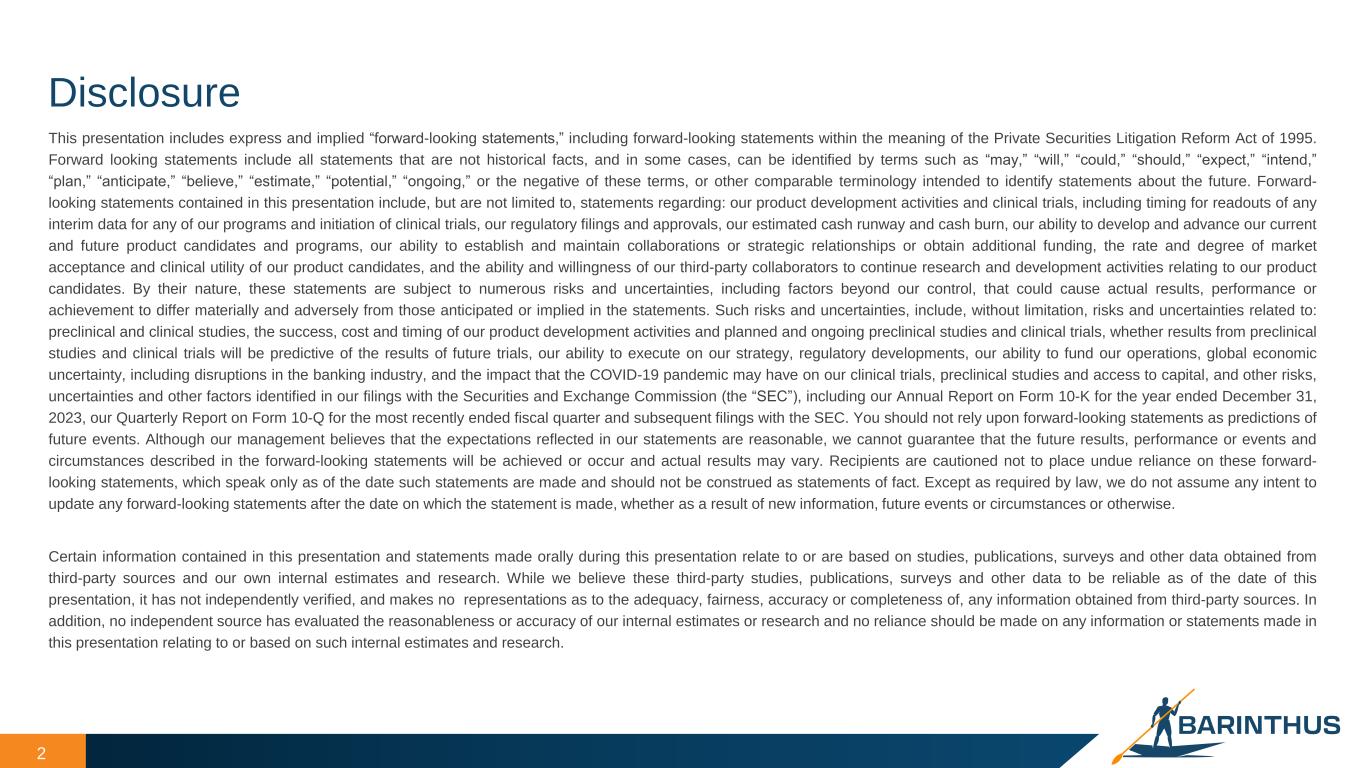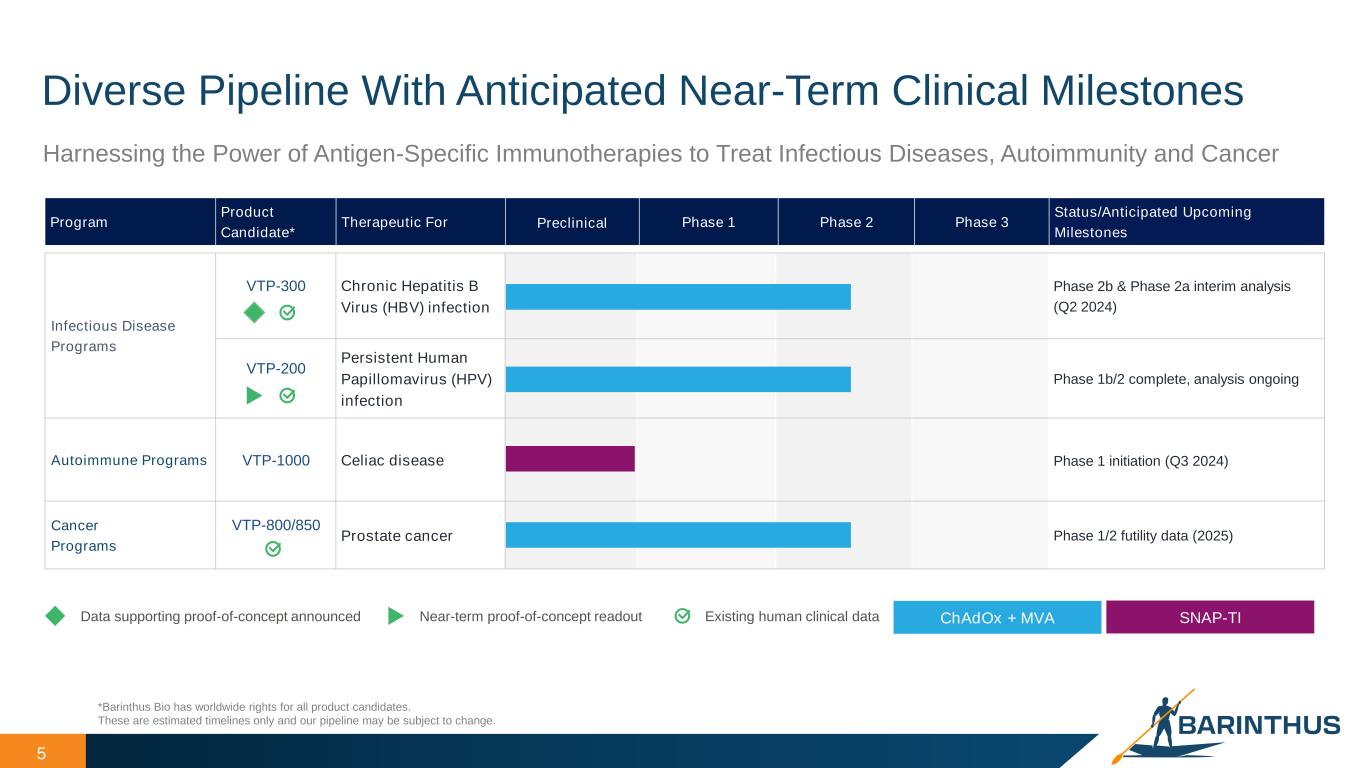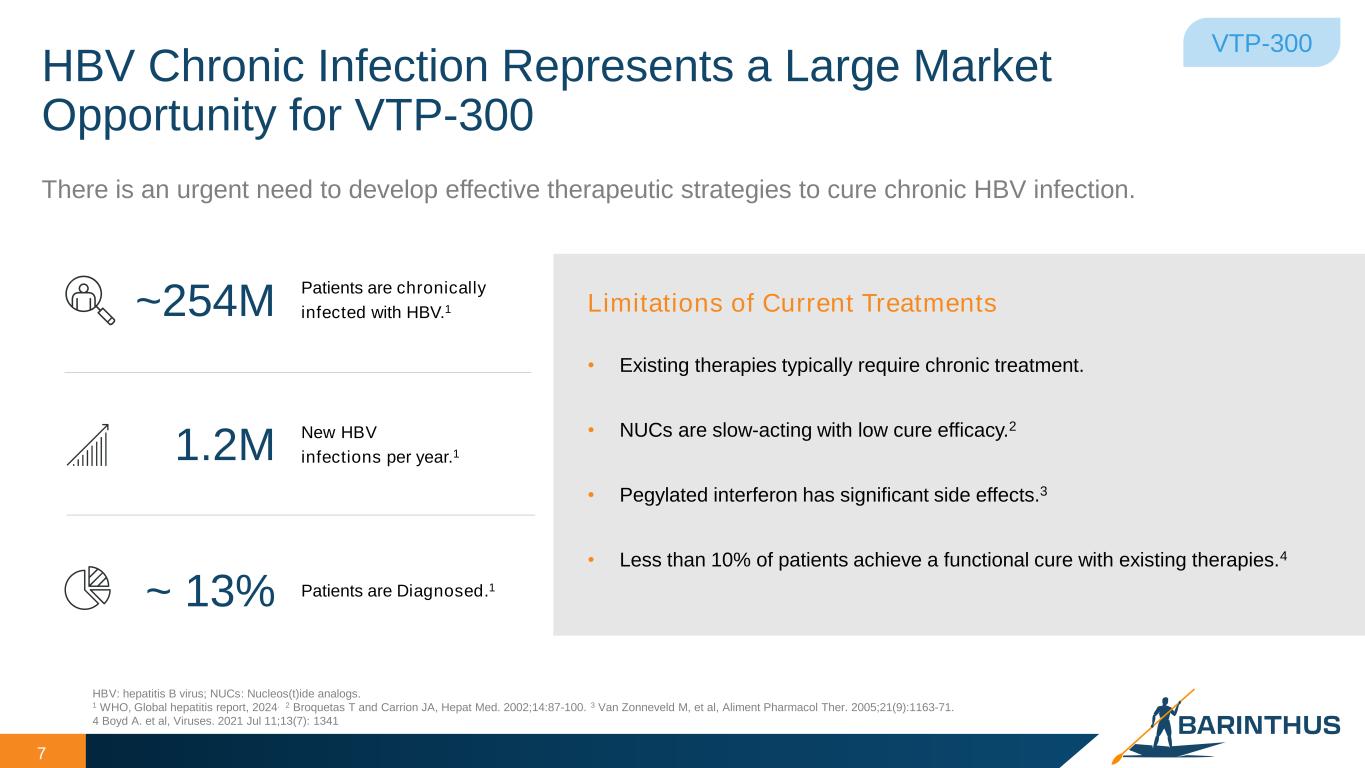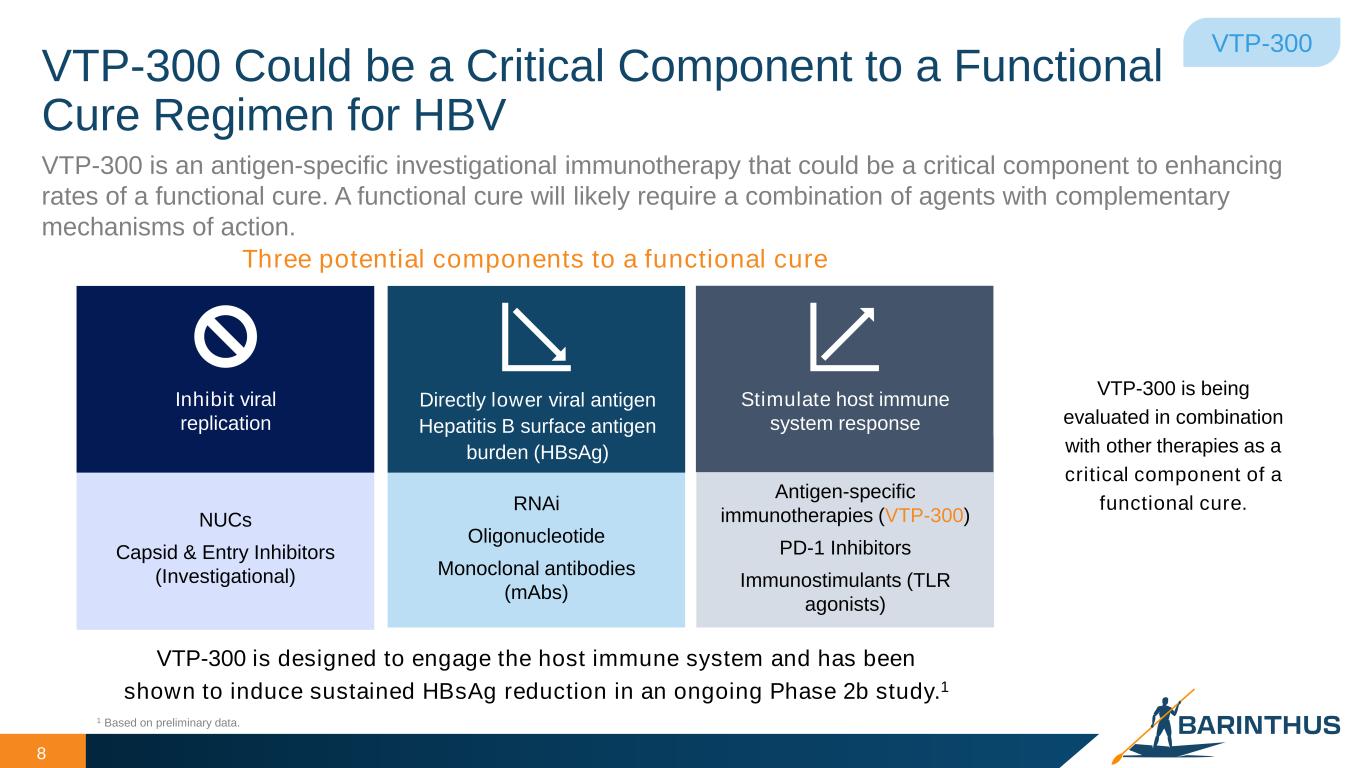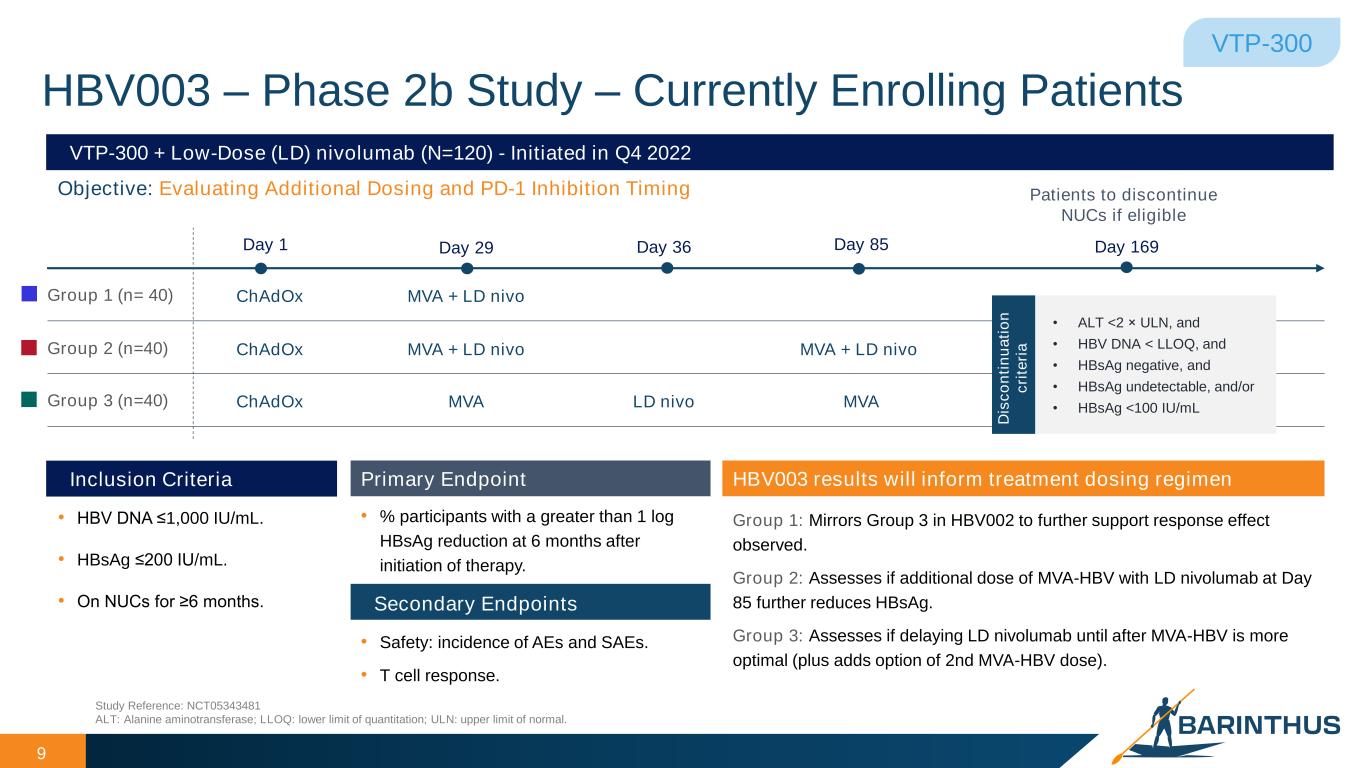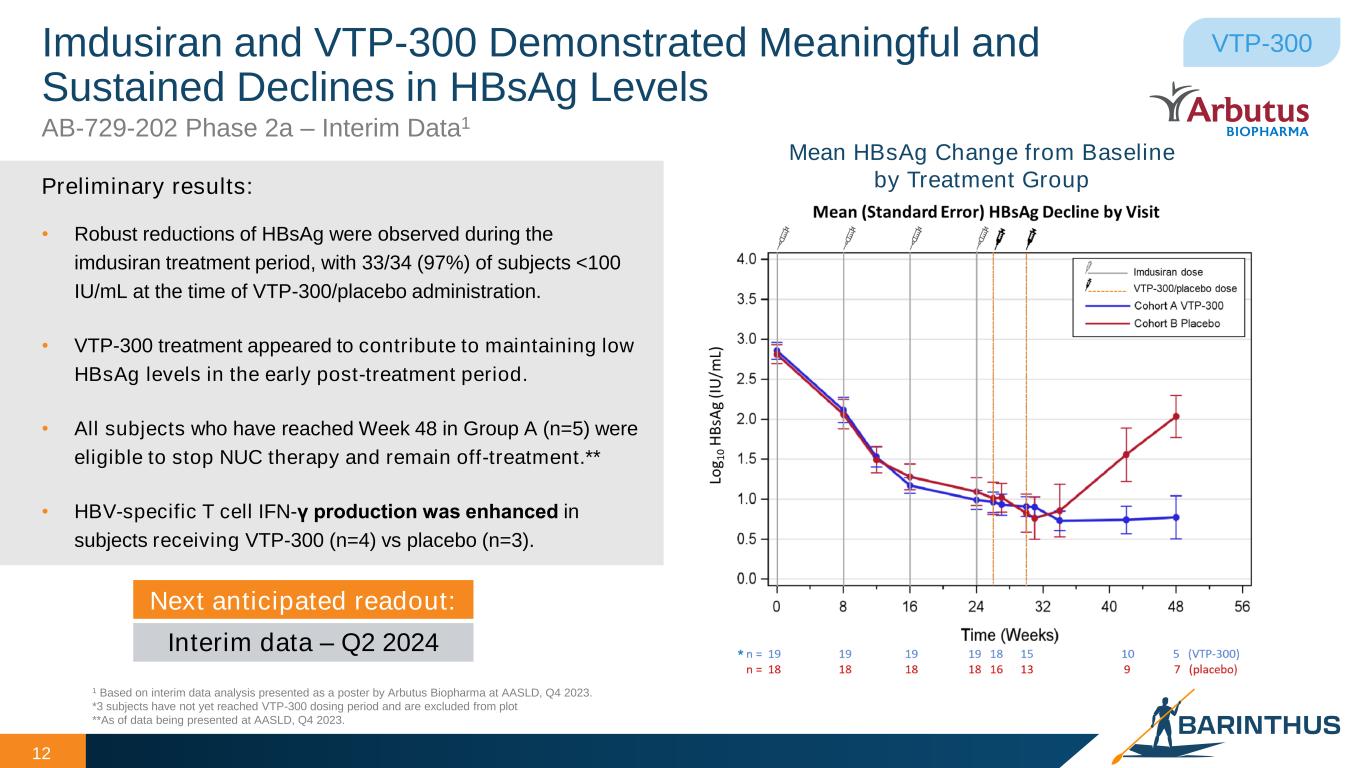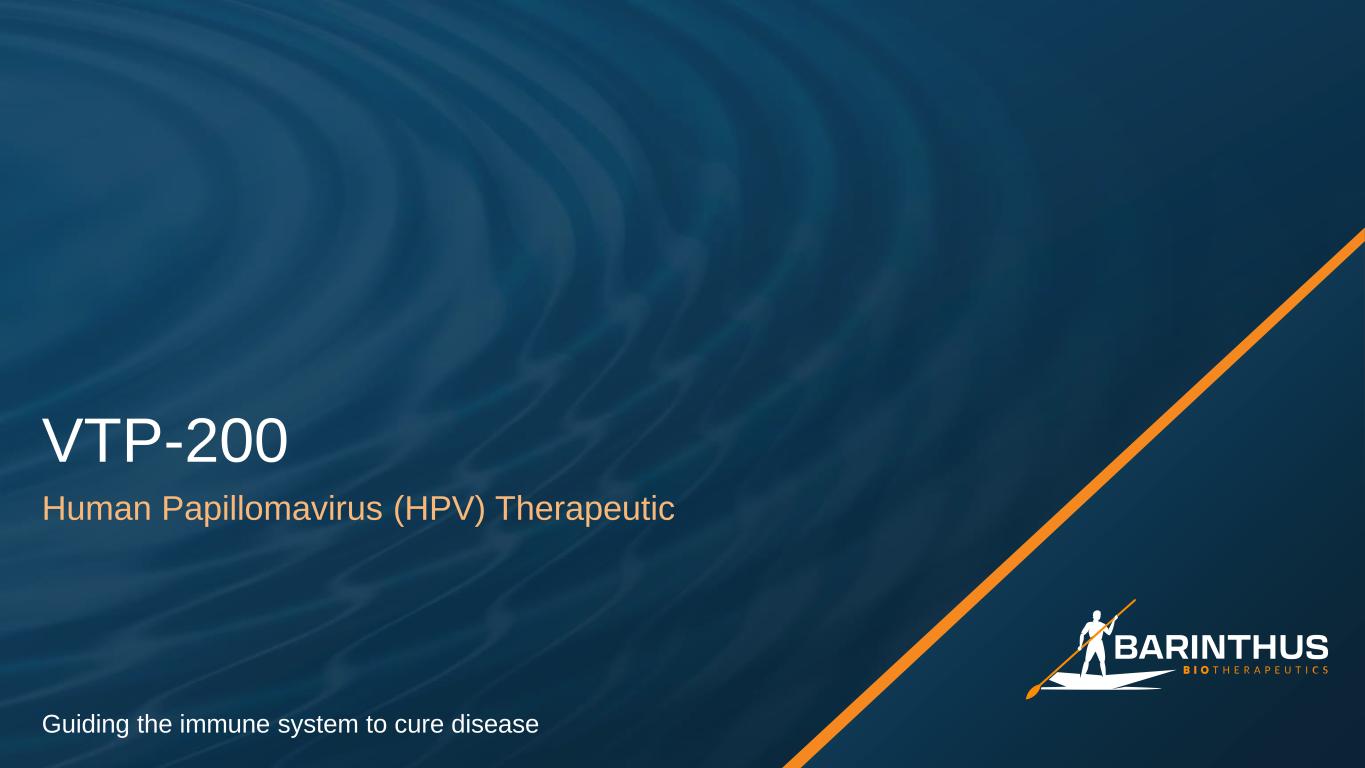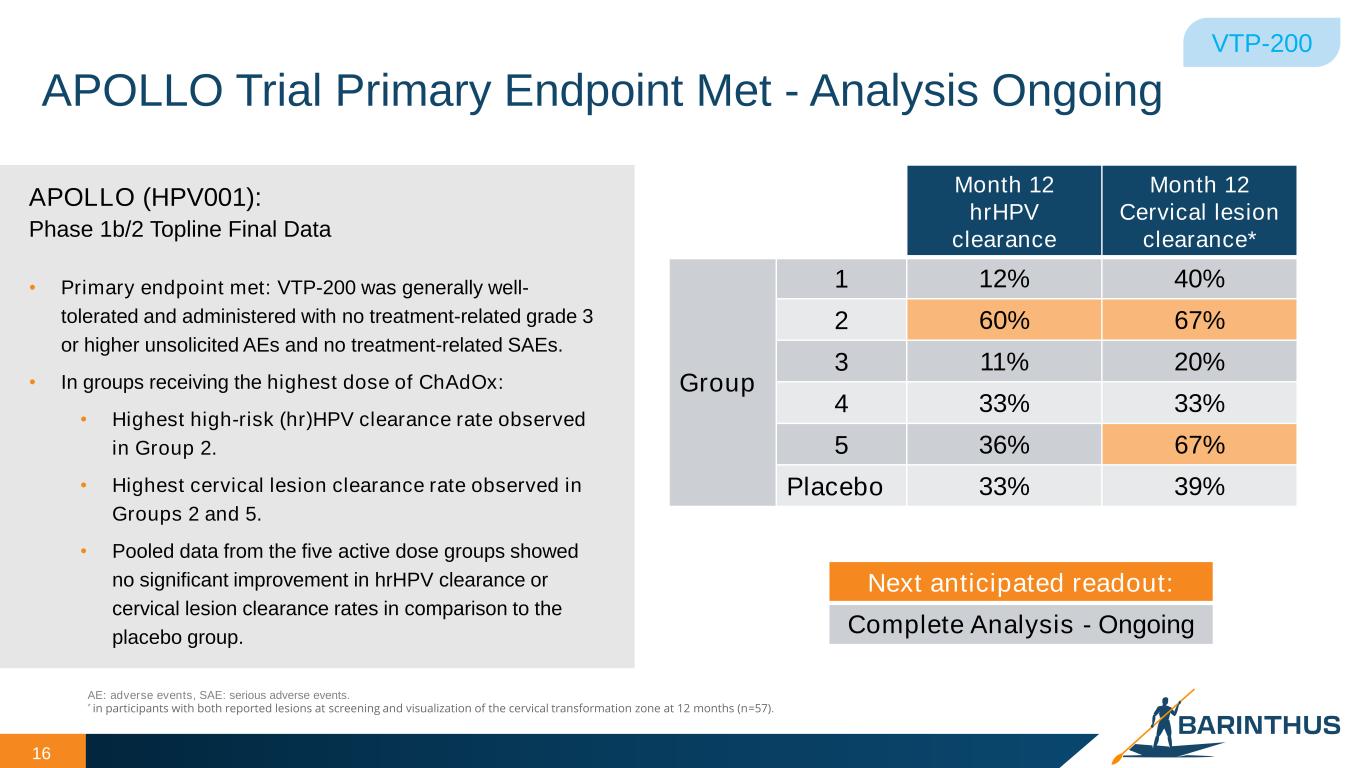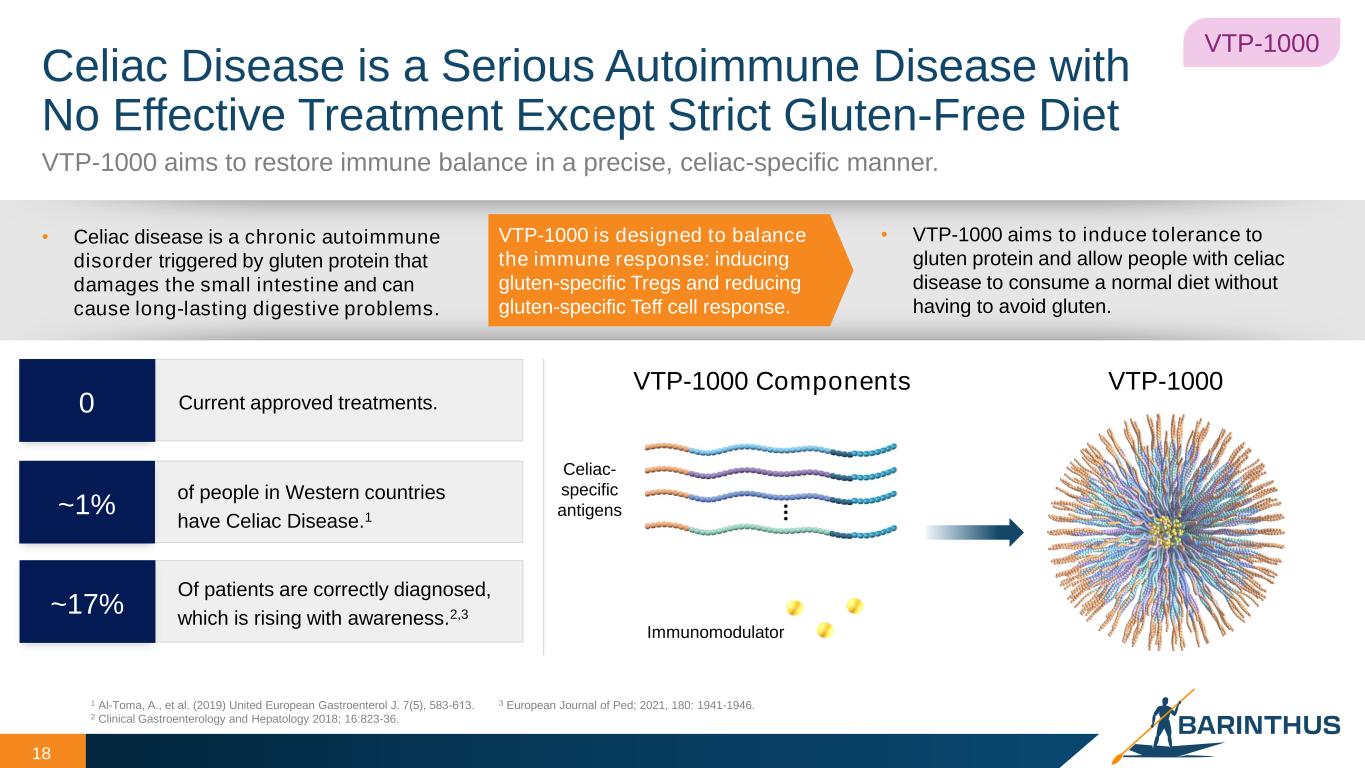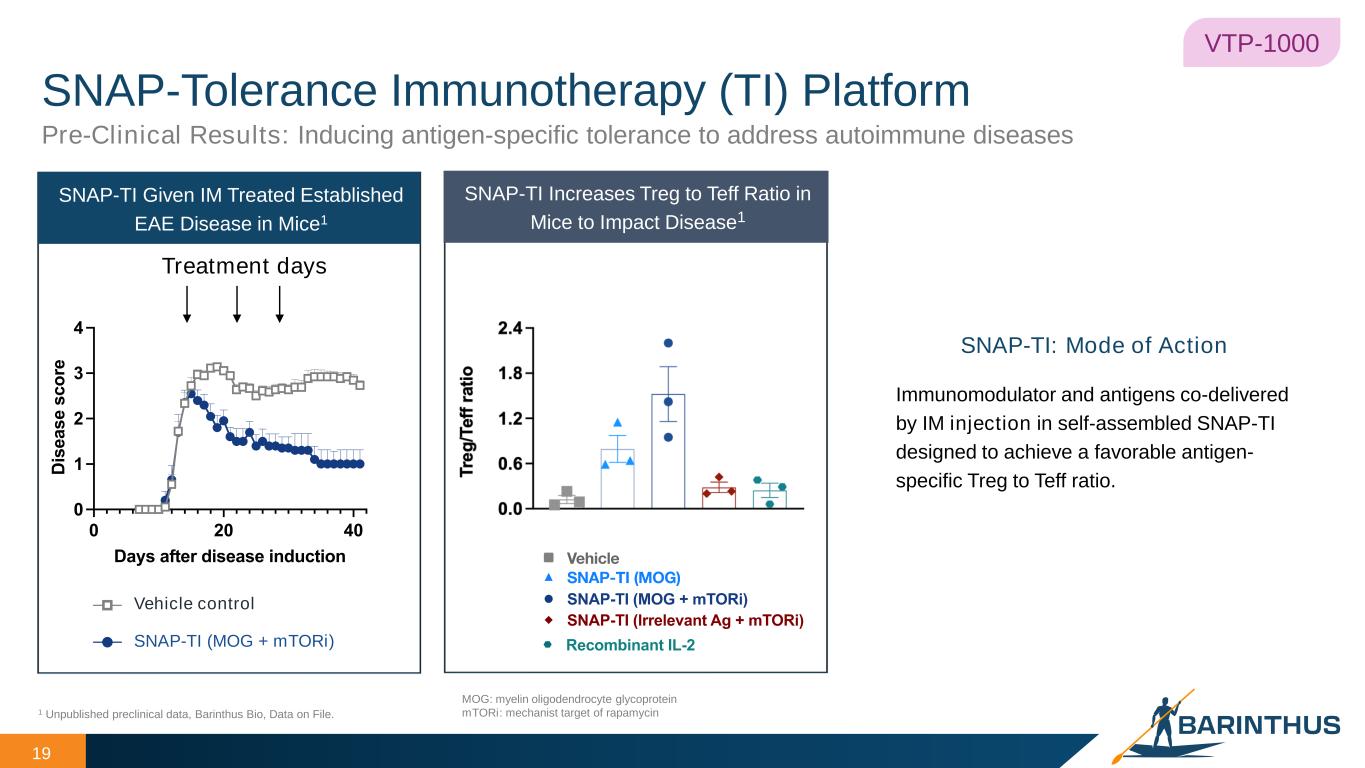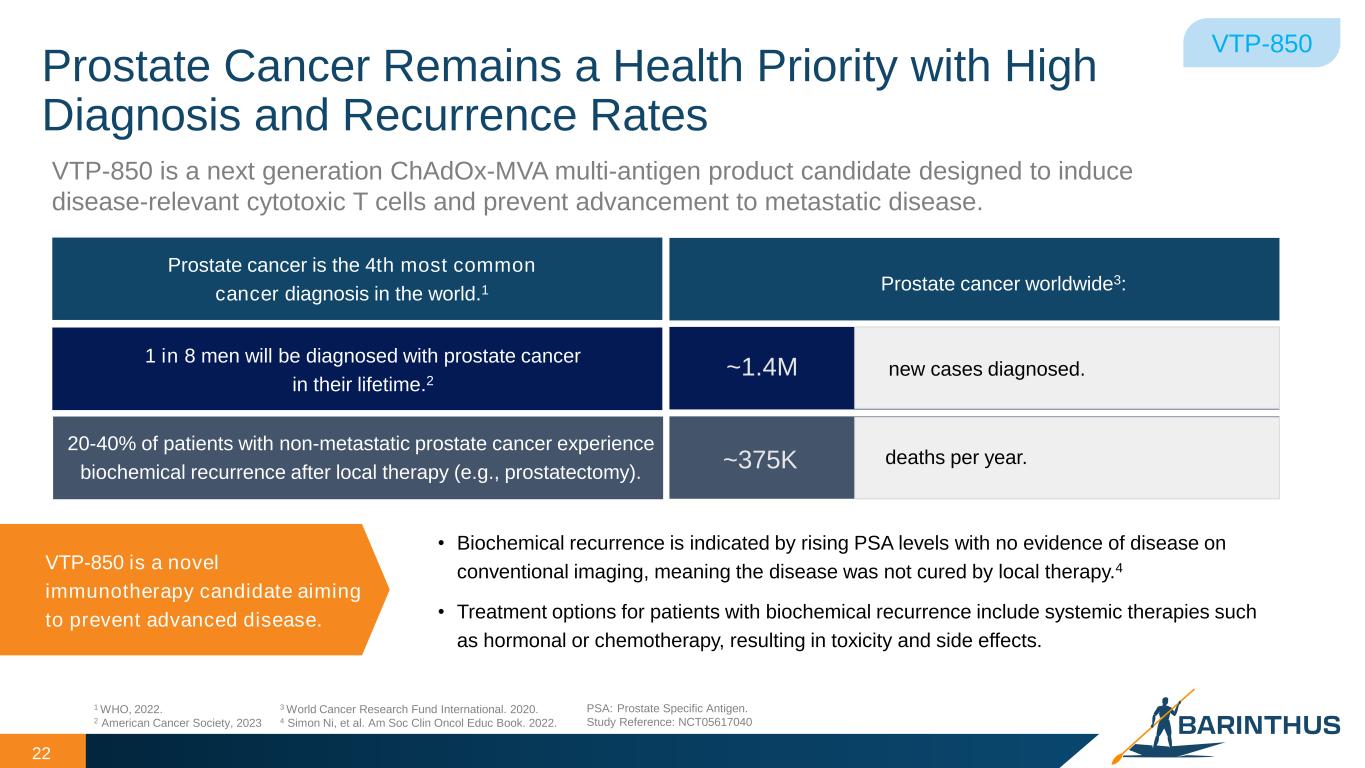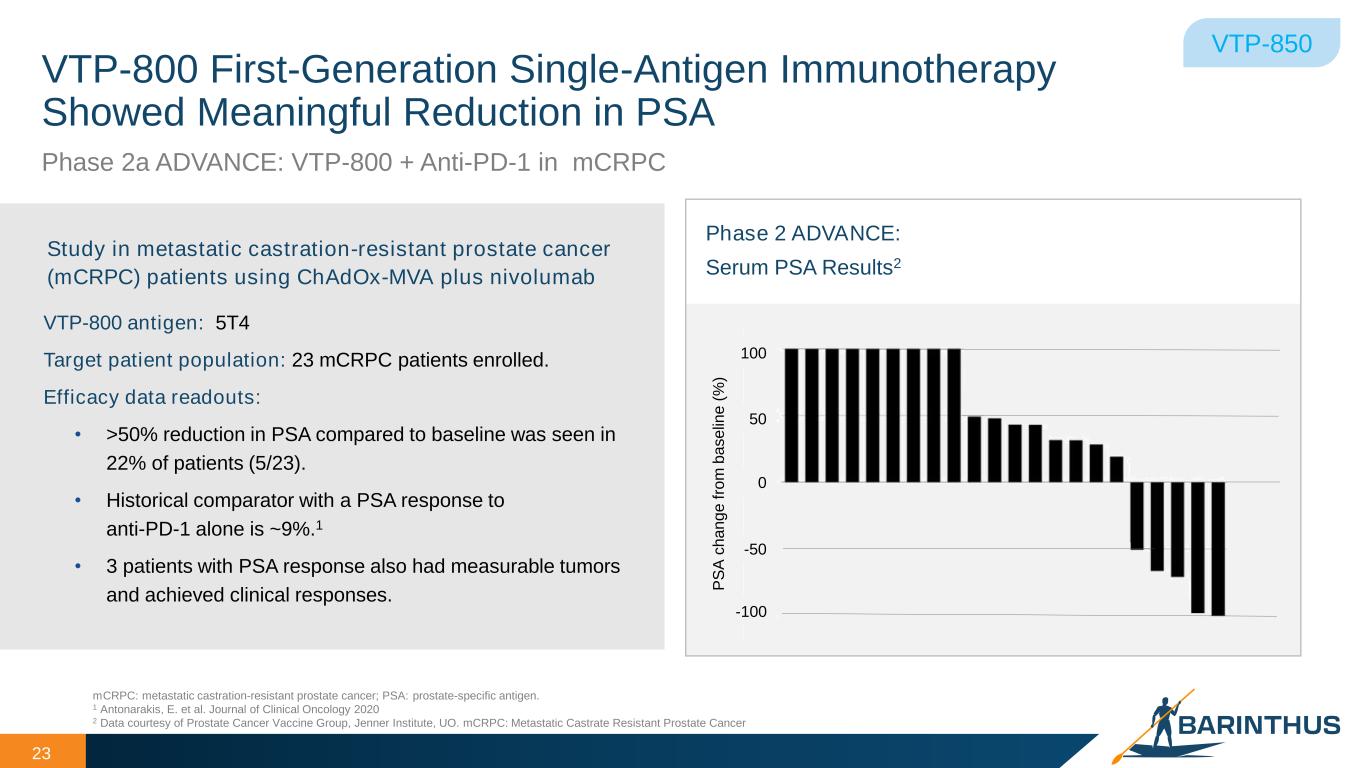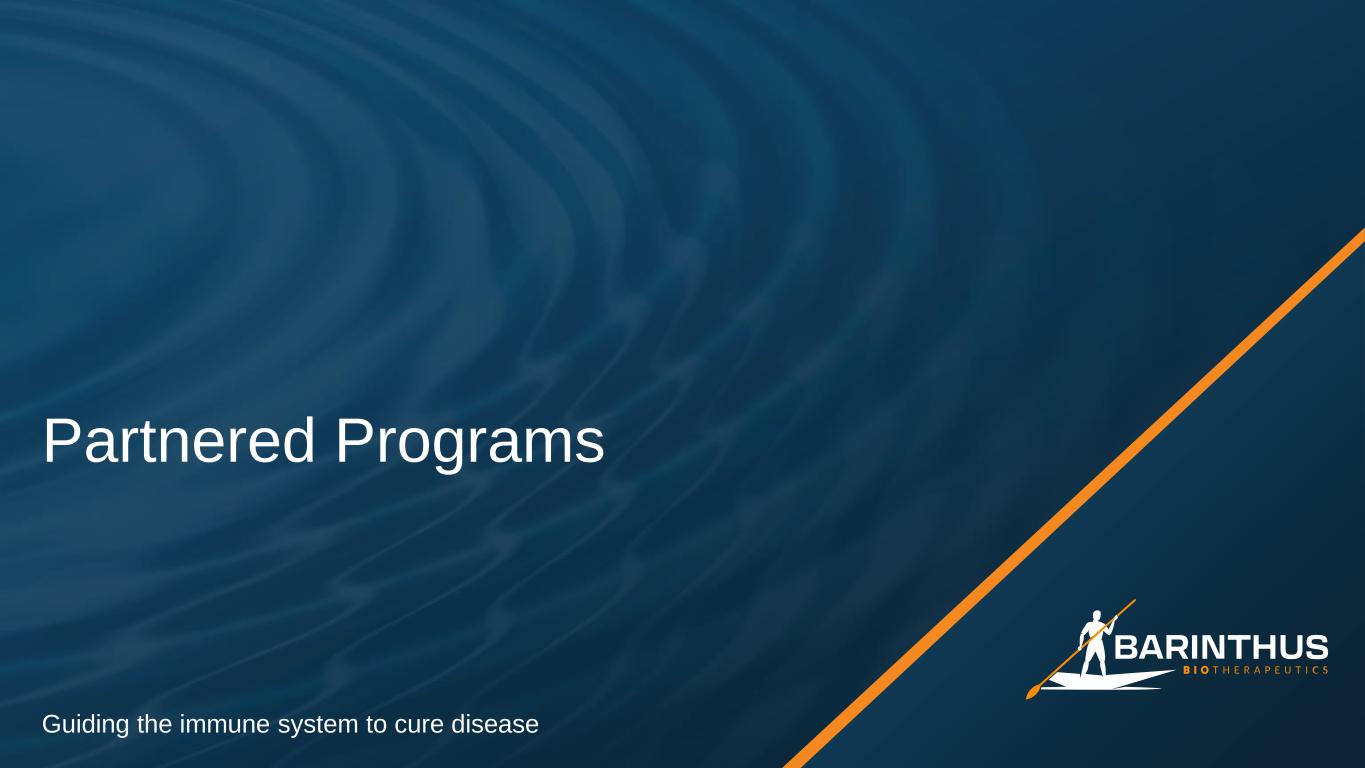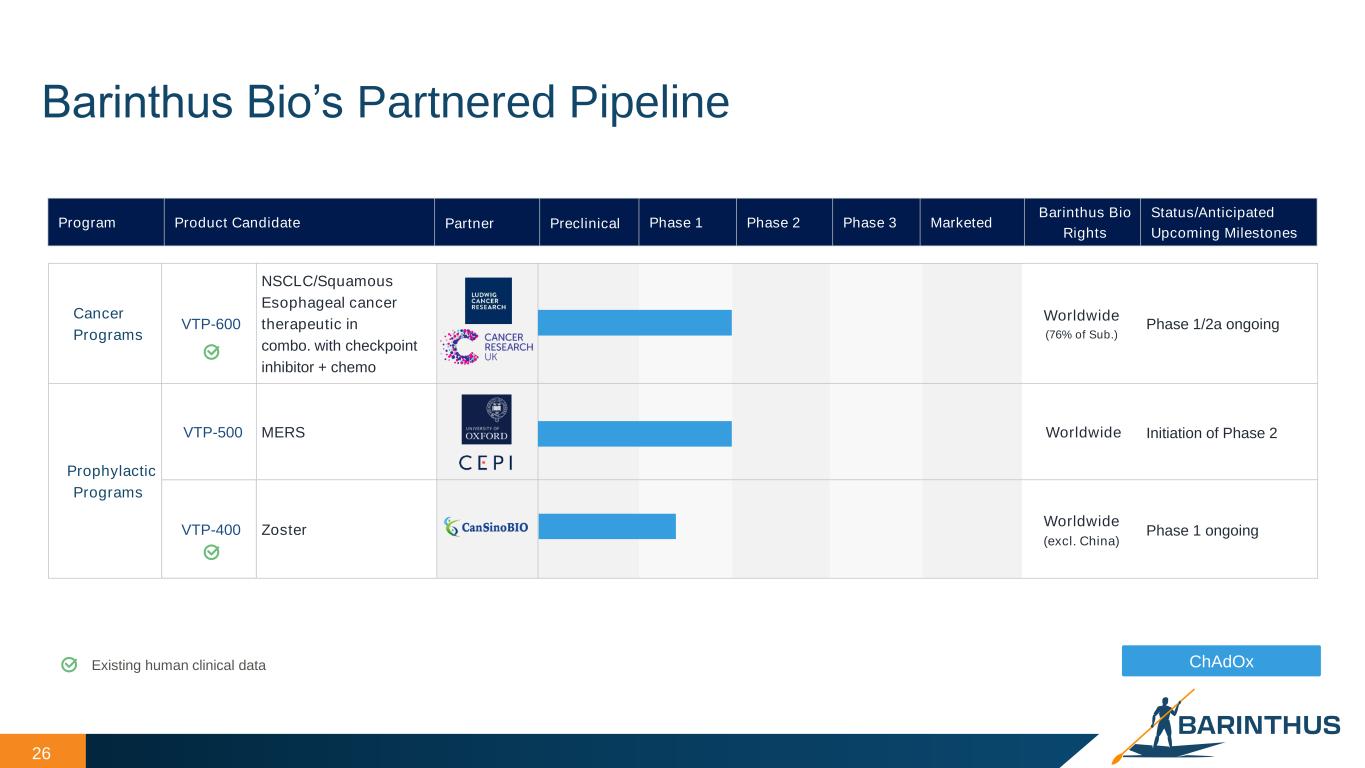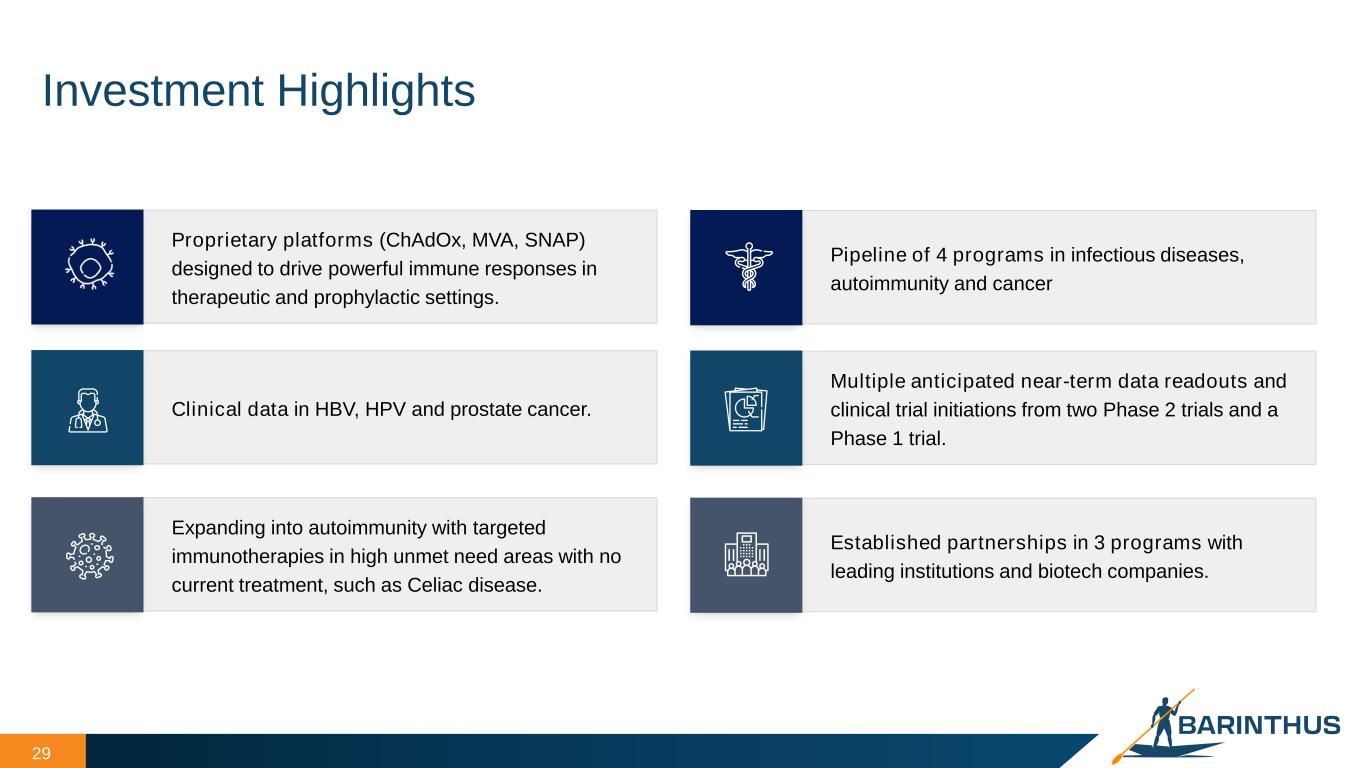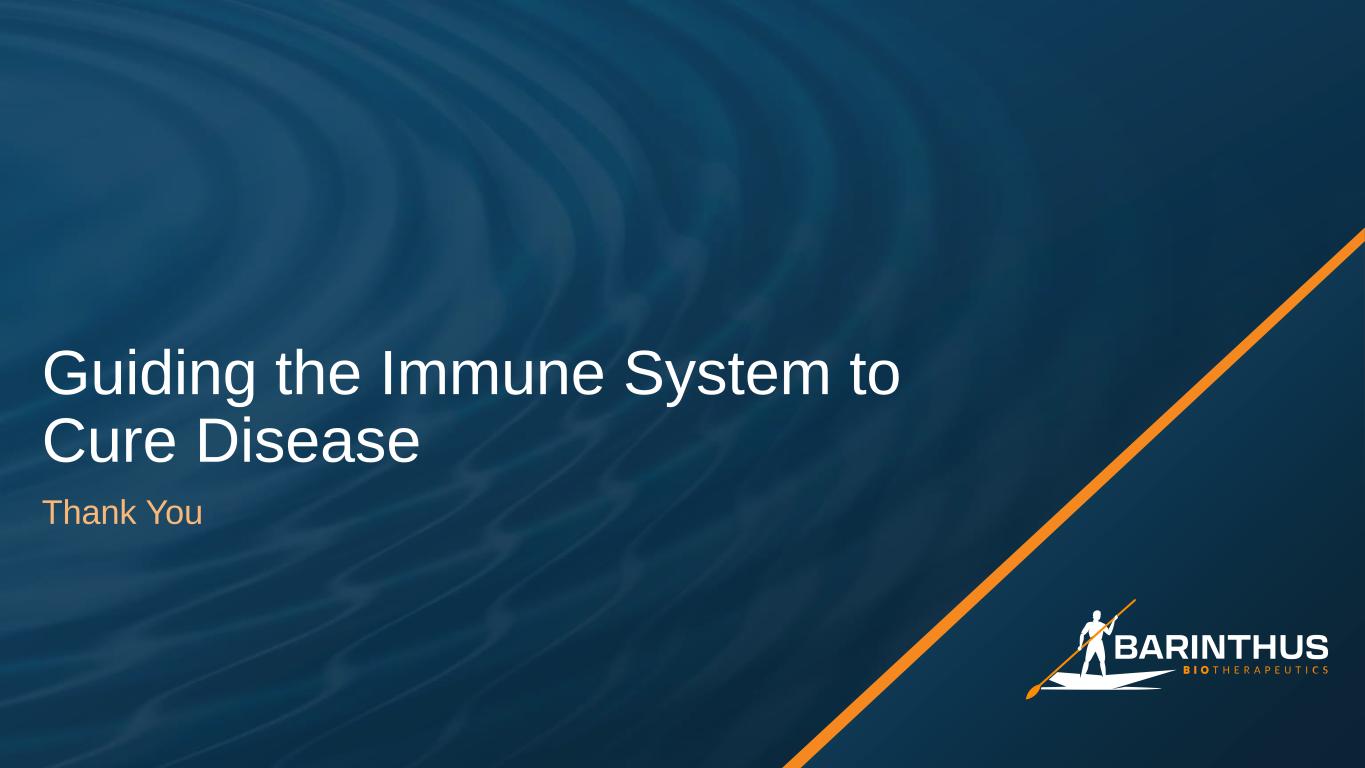Document
Barinthus Bio Reports First Quarter 2024 Financial Results and Update on Corporate Developments
OXFORD, United Kingdom, May 13, 2024 (GLOBE NEWSWIRE) – Barinthus Biotherapeutics plc (NASDAQ: BRNS), a clinical-stage biopharmaceutical company developing novel T cell immunotherapeutic candidates designed to guide the immune system to overcome chronic infectious diseases, autoimmunity, and cancer, announced its financial results for the first quarter of 2024 and provided an overview of the Company’s progress.
“So far in 2024 we have continued to make strides across our programs. Notably, we received clearance from the FDA on an IND to progress VTP-1000 in a first in human clinical trial in celiac disease, as well as clearance from the Australian Ethics Committee on this trial. We expect to begin our Phase 1 trial of VTP-1000 in participants with celiac disease in the coming months. Additionally, we reported topline final data from the Phase 1b/2 trial of VTP-200 in participants with persistent high-risk (hr) human papillomavirus (HPV) infections,” said Bill Enright, Chief Executive Officer of Barinthus Bio. "Looking ahead to Q2, we will present additional interim data from our VTP-300 hepatitis B trials at the European Association for the Study of the Liver (EASL) Congress in June. This follows the encouraging data presented at The American Association for the Study of Liver Diseases (AASLD) – The Liver Meeting® in November last year.
We will also welcome Dr. Leon Hooftman as our new Chief Medical Officer in June and look forward to him supporting the growth of our robust pipeline and programs.”
Recent Corporate Developments
Clinical developments
•VTP-1000 (Celiac Disease): In April 2024, we received clearance from the U.S. FDA on an Investigational New Drug (IND) application, as well as from the Australian regulatory authorities, to progress VTP-1000 in a first in human clinical trial in celiac disease. GLU001 is a randomized, placebo-controlled Phase 1 trial with a controlled gluten challenge to evaluate the safety, tolerability, pharmacokinetics and pharmacodynamics of VTP-1000 in adults with celiac disease. The study is designed in two parts; a single ascending dose part followed by a multiple ascending dose part, each randomized and placebo-controlled with three dose levels. The primary endpoint is assessment of the safety and tolerability of single and multiple dosing, and determination of a dose and schedule for further investigation. The trial also aims to demonstrate proof-of-principle of induction of immune tolerance and early proof-of-concept for VTP-1000, as a potential treatment for celiac disease, based on assessment of pharmacodynamics and preliminary efficacy determined by means of a controlled gluten challenge.
•VTP-200 (HPV): In April 2024, we announced topline final data from the APOLLO trial, (also known as HPV001) a Phase 1b/2 dose-ranging study of VTP-200 in women with low-grade cervical lesions associated with persistent hrHPV infection. The APOLLO study met its primary safety endpoint, demonstrating that VTP-200 was generally well-tolerated and was administered with no treatment-related grade 3 or higher unsolicited adverse events (AEs) and no treatment-related serious AEs. Positive trends in clearance rate for both hrHPV (60%, Group 2) and cervical lesions (67%, Groups 2 and 5), were observed in the groups receiving the highest ChAdOx dose. Pooled data from the five different active dose groups demonstrated no statistically significant improvement in either hrHPV or cervical lesion clearance in comparison to the placebo group.
•VTP-300 (HBV): In April 2024, abstracts on interim data from HBV003 and AB-729-202 were accepted for presentation at the upcoming EASL Congress in Milan, Italy, June 5-8, 2024.
Management Team
•On May 1, 2024, we announced the appointment of Dr. Leon Hooftman as Chief Medical Officer. Dr. Hooftman will join the company on June 3, 2024, and brings significant drug development expertise across a broad array of therapeutic areas including immunology, autoimmunity, hematology, oncology and infectious diseases.
Upcoming Milestones
•In the second quarter of 2024, the Company expects to:
◦VTP-300 (HBV): Present interim data from HBV003, our Phase 2b trial evaluating additional dosing of VTP-300 and timing of PD-1 inhibition, in participants with chronic hepatitis B (CHB) on nucleos(t)ide analogue (NUC) therapy at the EASL Congress in June.
◦VTP-300 (HBV): Announce interim data from the Phase 2a AB-729-202 clinical trial evaluating the combination of VTP-300 and Arbutus’ imdusiran, in participants with CHB on NUC therapy following presentation at the EASL Congress in June.
•In the third quarter of 2024, the Company expects to:
◦VTP-1000 (Celiac Disease): Dose the first patient in GLU001, a randomized, placebo-controlled Phase 1 trial with a controlled gluten challenge to evaluate the safety, tolerability, pharmacokinetics and pharmacodynamics of VTP-1000 in adults with celiac disease. This timing update is based on the latest feasibility and expected site set-up timelines.
First Quarter 2024 Financial Highlights
•Cash position: As of March 31, 2024, cash, cash equivalents and restricted cash was $130.0 million, compared to $142.1 million as of December 31, 2023. The cash used in operating activities was $11.8 million in the first quarter of 2024, primarily resulting from development of our pipeline and ongoing clinical trials. Based on current research and development plans, the Company expects its cash runway to fund its operating expenses and capital expenditure requirements into the fourth quarter of 2025.
•Revenue: Revenue was nil in the first quarter of 2024 compared to $0.5 million in the first quarter of 2023 and was due to no commercial sales of Vaxzevria® by AstraZeneca in 2024.
•Research and development expenses: Research and development expenses were $11.1 million in the first quarter of 2024 compared to $9.8 million in the first quarter of 2023, with the increase mainly attributable to hiring of personnel and increased costs related to the advancement of our programs. The quarter-on-quarter R&D expense per program is outlined in the following table.
|
|
|
|
|
|
|
|
|
|
|
|
|
|
|
|
|
|
|
|
|
| Year ended |
|
Three months ended March 31, 2024 |
|
Three months ended March 31, 2023 |
|
Change |
|
|
$000 |
|
$000 |
|
$000 |
| Direct research and development expenses by program: |
|
|
|
|
|
|
| VTP-200 HPV |
|
$ |
1,253 |
|
|
$ |
1,338 |
|
|
$ |
(85) |
|
| VTP-300 HBV |
|
1,913 |
|
|
2,118 |
|
|
(205) |
|
VTP-500 MERS1 |
|
172 |
|
|
— |
|
|
172 |
|
VTP-600 NSCLC2 |
|
164 |
|
|
275 |
|
|
(111) |
|
| VTP-850 Prostate cancer |
|
178 |
|
|
215 |
|
|
(37) |
|
| VTP-1000 Celiac |
|
1,374 |
|
|
1,572 |
|
|
(198) |
|
Other and earlier stage programs3 |
|
784 |
|
|
280 |
|
|
504 |
|
| Total direct research and development expenses |
|
$ |
5,838 |
|
|
$ |
5,798 |
|
|
$ |
40 |
|
| Indirect research and development expenses: |
|
|
|
|
|
|
| Personnel-related (including share-based compensation) |
|
4,335 |
|
|
3,601 |
|
|
734 |
|
| Facility related |
|
390 |
|
|
371 |
|
|
19 |
|
| Other indirect costs |
|
562 |
|
|
44 |
|
|
518 |
|
| Total indirect research and development expenses |
|
5,287 |
|
|
4,016 |
|
|
1,271 |
|
| Total research and development expense |
|
$ |
11,125 |
|
|
$ |
9,814 |
|
|
$ |
1,311 |
|
1The development of VTP-500 is funded pursuant to an agreement with the Coalition for Epidemic Preparedness Innovations (CEPI).
2The VTP-600 NSCLC Phase 1/2a trial is sponsored by Cancer Research UK.
3Research and development expenses related to VTP-1100 HPV Cancer were previously included with VTP-1000 Celiac but are now included in 'Other and earlier stage programs' because we are focusing resources on other clinical programs and deferring the IND application for VTP-1100 in HPV cancer.
•General and administrative expenses: General and administrative expenses were $6.0 million in the first quarter of 2024, compared to $12.1 million in the first quarter of 2023. The decrease of $6.1 million relates primarily to a gain of $1.2 million on foreign exchange for the first quarter of 2024, compared to a loss of $3.5 million for the first quarter of 2023, a decrease in personnel expenses, including share-based payment charges of $0.8 million, primarily due to a reduction in non-cash share-based payment charges, and a decrease in insurance costs of $0.9 million due to a reduction in insurance premiums.
•Net loss: For the first quarter of 2024, the Company generated a net loss attributable to its shareholders of $15.5 million, or $(0.40) per share on both basic and fully diluted bases, compared to a net loss attributable to its shareholders of $18.2 million, or $(0.48) per share on both basic and fully diluted bases in the first quarter of 2023.
About Barinthus Bio
Barinthus Bio is a clinical-stage biopharmaceutical company developing novel T cell immunotherapeutic candidates designed to guide the immune system to overcome chronic infectious diseases, autoimmunity and cancer. Helping people living with serious diseases and their families is the guiding principle at the heart of Barinthus Bio. With a broad pipeline, built around three proprietary platform technologies: ChAdOx, MVA and SNAP, Barinthus Bio is advancing a pipeline of five product candidates across a diverse range of therapeutic areas, including: VTP-300, an immunotherapeutic candidate designed as a potential component of a functional cure for chronic HBV infection; VTP-200, a non-surgical product candidate for persistent high-risk human papillomavirus (HPV); VTP-1000, an autoimmune candidate designed to utilize the SNAP-Tolerance Immunotherapy (TI) platform to treat patients with celiac disease; and VTP-850, a second-generation immunotherapeutic candidate designed to treat recurrent prostate cancer. Barinthus Bio’s proven scientific expertise, diverse portfolio and focus on pipeline development uniquely positions the company to navigate towards delivering treatments for people with infectious diseases, autoimmunity and cancers that have a significant impact on their everyday lives. For more information, visit www.barinthusbio.com.
Forward Looking Statements
This press release contains forward-looking statements regarding Barinthus Bio within the meaning of the Private Securities Litigation Reform Act of 1995, as amended, which can generally be identified as such by use of the words “may,” “will,” “plan,” “forward,” “encouraging,” “believe,” “potential,” "expect", and similar expressions, although not all forward-looking statements contain these identifying words. These forward-looking statements include, without limitation, express or implied statements regarding our future expectations, plans and prospects, including our product development activities and clinical trials, including timing for readouts of any preliminary, interim or final data for any of our programs, the timing for initiation of any clinical trials, including dosing of the first patient in GLU001 for VTP-1000, our anticipated regulatory filings and approvals, our preliminary estimated cash and cash equivalents, our cash runway, and our ability to develop and advance our current and future product candidates and programs. Any forward-looking statements in this press release are based on our management’s current expectations and beliefs and are subject to numerous risks, uncertainties and important factors that may cause actual events or results to differ materially from those expressed or implied by any forward-looking statements contained in this press release, including, without limitation, risks and uncertainties related to the success, cost and timing of our pipeline development activities and planned and ongoing clinical trials, including the risk that the timing for preliminary, interim or final data or initiation of our clinical trails may be delayed, our ability to execute on our strategy, regulatory developments, our ability to fund our operations and access capital, our cash runway, including the risk that our estimate of our cash runway may be incorrect, global economic uncertainty, including disruptions in the banking industry, the conflict in Ukraine, the conflict in Israel and Gaza, and other risks identified in our filings with the Securities and Exchange Commission (the “SEC”), including our Annual Report on Form 10-K for the year ended December 31, 2023, our Quarterly Reports on Form 10-Q and Current Reports on Form 8-K. We caution you not to place undue reliance on any forward-looking statements, which speak only as of the date they are made. We expressly disclaim any obligation to publicly update or revise any such statements to reflect any change in expectations or in events, conditions or circumstances on which any such statements may be based, or that may affect the likelihood that actual results will differ from those set forth in the forward-looking statements.
BARINTHUS BIOTHERAPEUTICS PLC
CONSOLIDATED BALANCE SHEETS
(IN THOUSANDS, EXCEPT NUMBER OF SHARES AND PER SHARE AMOUNTS)
(UNAUDITED)
|
|
|
|
|
|
|
|
|
|
|
|
|
|
|
|
March 31,
2024 |
|
December 31,
2023 |
|
| ASSETS |
|
|
|
|
| Cash, cash equivalents and restricted cash |
$ |
129,971 |
|
|
$ |
142,090 |
|
|
| Research and development incentives receivable |
5,196 |
|
|
4,908 |
|
|
| Prepaid expenses and other current assets |
7,964 |
|
|
9,907 |
|
|
| Total current assets |
143,131 |
|
|
156,905 |
|
|
| Goodwill |
12,209 |
|
|
12,209 |
|
|
| Property and equipment, net |
11,532 |
|
|
11,821 |
|
|
| Intangible assets, net |
24,317 |
|
|
25,108 |
|
|
| Right of use assets, net |
7,408 |
|
|
7,581 |
|
|
| Other assets |
885 |
|
|
882 |
|
|
| Total assets |
$ |
199,482 |
|
|
$ |
214,506 |
|
|
| LIABILITIES AND STOCKHOLDERS’ EQUITY |
|
|
|
|
| Current liabilities: |
|
|
|
|
| Accounts payable |
1,162 |
|
|
1,601 |
|
|
| Accrued expenses and other current liabilities |
8,330 |
|
|
9,212 |
|
|
| Deferred income |
1,434 |
|
|
— |
|
|
| Operating lease liability - current |
1,909 |
|
|
1,785 |
|
|
|
|
|
|
|
| Total current liabilities |
12,835 |
|
|
12,598 |
|
|
| Non-Current liabilities: |
|
|
|
|
| Operating lease liability - non-current |
10,897 |
|
|
11,191 |
|
|
| Contingent consideration |
1,867 |
|
|
1,823 |
|
|
| Other non-current liabilities |
1,330 |
|
|
1,325 |
|
|
| Deferred tax liability, net |
537 |
|
|
574 |
|
|
| Total liabilities |
$ |
27,466 |
|
|
$ |
27,511 |
|
|
| Commitments and contingencies (Note 15) |
|
|
|
|
| Stockholders’ equity: |
|
|
|
|
Ordinary shares, £0.000025 nominal value; 38,952,956 shares authorized, issued and outstanding (December 31, 2023: authorized, issued and outstanding:38,643,540) |
1 |
|
|
1 |
|
|
Deferred A shares, £1 nominal value; 63,443 shares authorized, issued and outstanding (December 31, 2023: authorized, issued and outstanding:63,443) |
86 |
|
|
86 |
|
|
| Additional paid-in capital |
388,720 |
|
|
386,602 |
|
|
| Accumulated deficit |
(192,079) |
|
|
(176,590) |
|
|
| Accumulated other comprehensive loss – foreign currency translation adjustments |
(24,895) |
|
|
(23,315) |
|
|
| Total stockholders’ equity attributable to Barinthus Biotherapeutics plc shareholders |
171,833 |
|
|
186,784 |
|
|
| Noncontrolling interest |
183 |
|
|
211 |
|
|
| Total stockholders’ equity |
$ |
172,016 |
|
|
$ |
186,995 |
|
|
| Total liabilities and stockholders’ equity |
$ |
199,482 |
|
|
$ |
214,506 |
|
|
|
|
|
|
|
BARINTHUS BIOTHERAPEUTICS PLC
CONSOLIDATED STATEMENTS OF OPERATIONS AND COMPREHENSIVE LOSS
(IN THOUSANDS, EXCEPT NUMBER OF SHARES AND PER SHARE AMOUNTS)
(UNAUDITED)
|
|
|
|
|
|
|
|
|
|
|
|
|
|
|
|
|
|
|
|
|
Three months ended |
|
|
|
|
|
March 31, 2024 |
|
March 31, 2023 |
License revenue 1 |
|
|
|
|
$ |
— |
|
|
$ |
468 |
|
| Total revenue |
|
|
|
|
— |
|
|
468 |
|
| Operating expenses |
|
|
|
|
|
|
|
| Research and development |
|
|
|
|
11,125 |
|
|
9,814 |
|
| General and administrative |
|
|
|
|
5,994 |
|
|
12,138 |
|
| Total operating expenses |
|
|
|
|
17,119 |
|
|
21,952 |
|
| Other operating income |
|
|
|
|
205 |
|
|
— |
|
| Loss from operations |
|
|
|
|
(16,914) |
|
|
(21,484) |
|
| Other income/(expense): |
|
|
|
|
|
|
|
| Interest income |
|
|
|
|
775 |
|
|
1,588 |
|
| Interest expense |
|
|
|
|
(12) |
|
|
— |
|
| Research and development incentives |
|
|
|
|
594 |
|
|
1,157 |
|
| Total other income, net |
|
|
|
|
1,357 |
|
|
2,745 |
|
| Loss before income tax |
|
|
|
|
(15,557) |
|
|
(18,739) |
|
| Tax benefit |
|
|
|
|
37 |
|
|
516 |
|
| Net loss |
|
|
|
|
(15,520) |
|
|
(18,223) |
|
| Net loss attributable to noncontrolling interest |
|
|
|
|
31 |
|
|
43 |
|
| Net loss attributable to Barinthus Biotherapeutics plc shareholders |
|
|
|
|
(15,489) |
|
|
(18,180) |
|
|
|
|
|
|
|
|
|
| Weighted-average ordinary shares outstanding, basic |
|
|
|
|
38,773,482 |
|
|
38,013,399 |
| Weighted-average ordinary shares outstanding, diluted |
|
|
|
|
38,773,482 |
|
38,013,399 |
| Net loss per share attributable to ordinary shareholders, basic |
|
|
|
|
$ |
(0.40) |
|
|
$ |
(0.48) |
|
| Net loss per share attributable to ordinary shareholders, diluted |
|
|
|
|
$ |
(0.40) |
|
|
$ |
(0.48) |
|
|
|
|
|
|
|
|
|
| Net loss |
|
|
|
|
$ |
(15,520) |
|
|
$ |
(18,223) |
|
| Other comprehensive (loss)/gain – foreign currency translation adjustments |
|
|
|
|
(1,577) |
|
|
4,580 |
|
| Comprehensive loss |
|
|
|
|
(17,097) |
|
|
(13,643) |
|
| Comprehensive loss attributable to noncontrolling interest |
|
|
|
|
28 |
|
|
37 |
|
| Comprehensive loss attributable to Barinthus Biotherapeutics plc shareholders |
|
|
|
|
$ |
(17,069) |
|
|
$ |
(13,606) |
|
1Includes license revenue from related parties for the three months ended March 31, 2024 of nil (March 31, 2023: $0.5 million).
IR contacts:
Christopher M. Calabrese
Managing Director
LifeSci Advisors
+1 917-680-5608
ccalabrese@lifesciadvisors.com
Kevin Gardner
Managing Director
LifeSci Advisors
+1 617-283-2856
kgardner@lifesciadvisors.com
Media contact:
Audra Friis
Sam Brown, Inc.
+1 917-519-9577
audrafriis@sambrown.com
Company contact:
Jonothan Blackbourn
IR & PR Manager
Barinthus Bio
ir@barinthusbio.com

